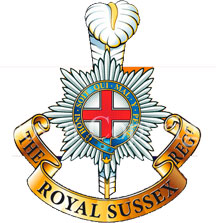The Royal Sussex Regiment: a history
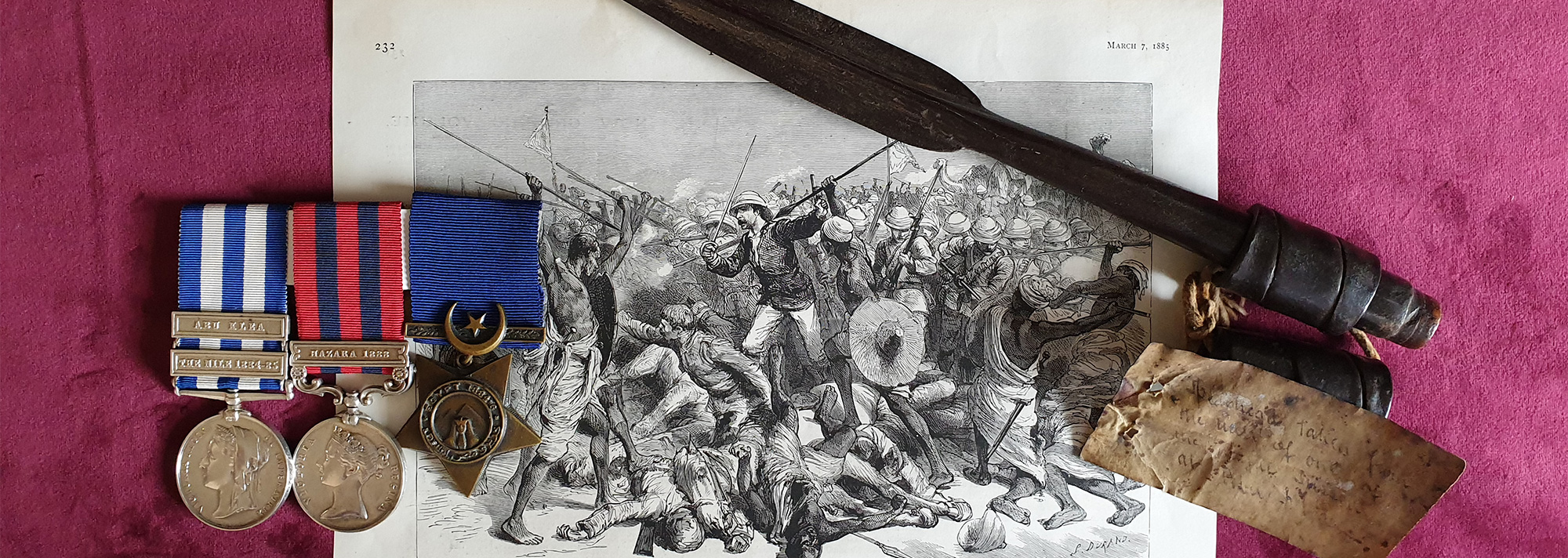
Beginnings
In the years following the Battle of the Boyne, King William lll commissioned the 3rd Earl of Donegall to raise a Regiment in Belfast, from Protestants of the Orange Order, to prevent any further catholic uprisings, therefore in 1701 the Earl raised his Regiment of Foot.
The King took a special interest in the Regiment on its raising and as a mark of his Royal favour granted it the orange facings, which distinguished it for many years. Therefore there are links to both the House of Orange, who were Honorary Colonels for many generations, and Belfast for the colour orange. When the first 300 volunteers paraded, they had no uniforms, so wore orange lilies in their hats as a mark of respect for William of Orange, giving the new Regiment the nickname ‘The Orange Lilies’.
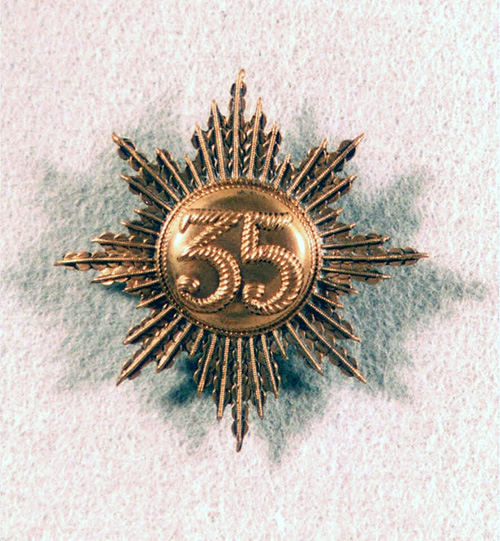
The War of the Spanish Succession
The Regiment’s first tour of active service was in 1702 during the War of the Spanish Succession, as ‘Soldiers at Sea’ not marines as sometimes suggested. The Regiment’s tradition of discharging the ‘Loyal Toast’ seated derives from this time as the height below decks precluded standing.
Also at this time, in order to test the loyalty of his officers, the Colonel insisted on each officer drinking the Loyal toast individually. Both these traditions are still performed by our successor Regiment, The Princess of Wales’s Royal Regiment. They fought at Cadiz and later at the defence of Barcelona where it lost its Colonel, the Earl of Donegall. It was then sent to Gibraltar as part of the relieving force, earning its first and oldest battle honour ‘Gibraltar’.
The Regiment continued to serve in Spain until 1707 when at the Battle of Almanza, it was almost destroyed. The remnant was sent home to reorganise and in 1709 was sent to Ireland.
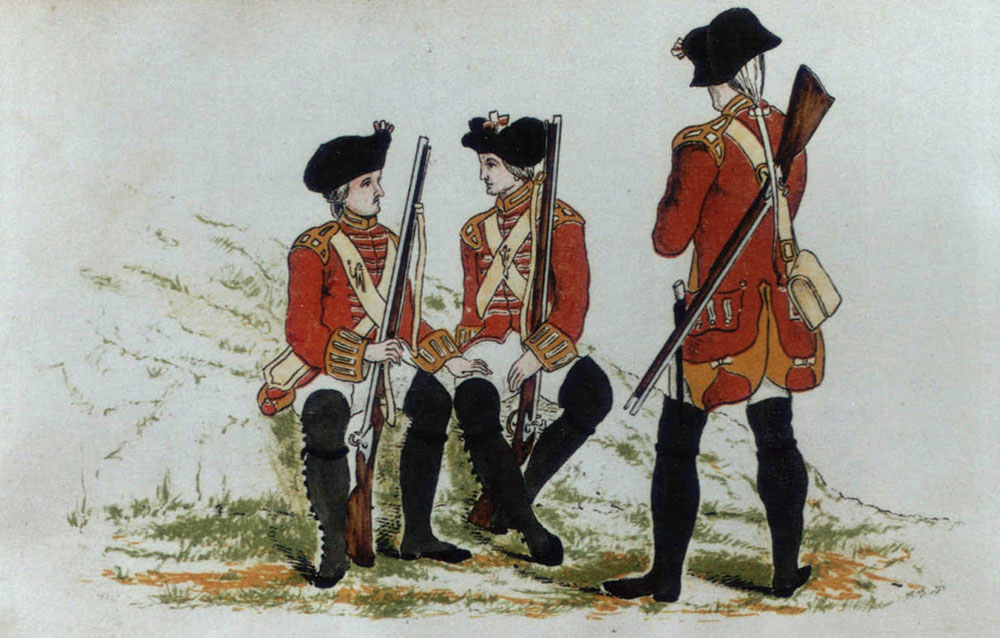
CHCRS 0861 Hand coloured print of Privates from Earl of Donegall’s 1707 from Colonel Luard’s Dress of the British Soldier
Colonel Charles Otway
In 1717 Colonel Charles Otway was appointed to command and he became the longest serving Colonel in its long history.
In 1751 all regiments in the Army received numbers in order of raising (giving the army its order of precedence) and ‘Otway’s Regiment became the 35th of Foot. The same warrant that gave the regiments their numbers also settled their colours which were of course orange for the Regimental Colour.
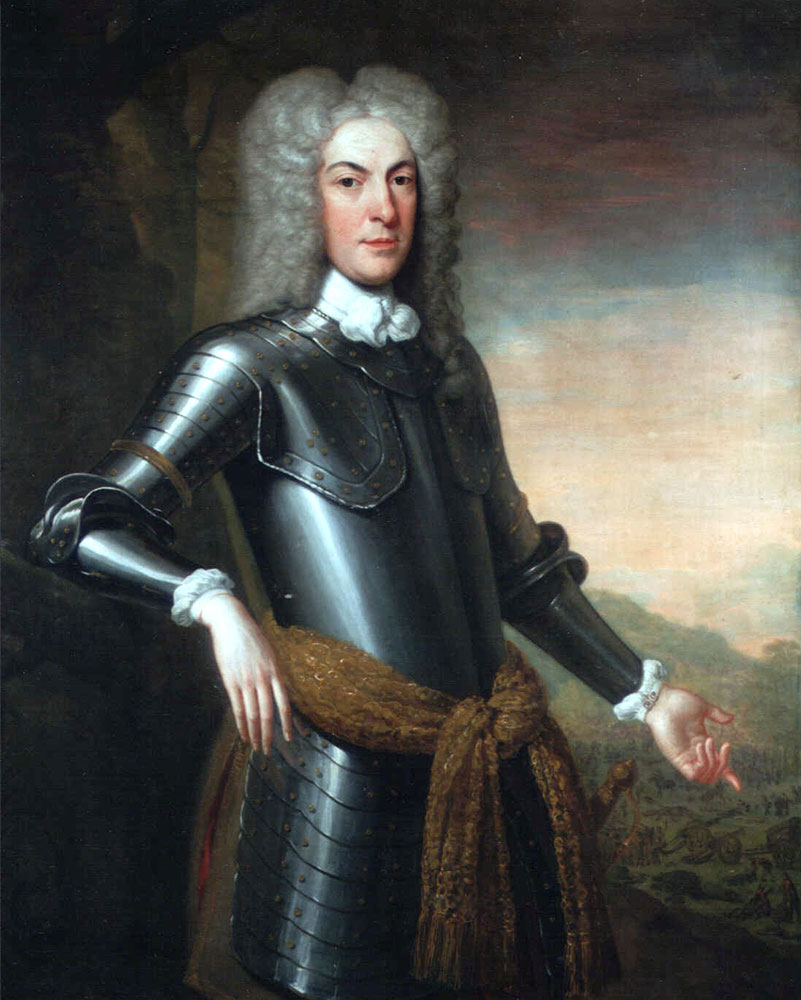
CHCRS 1466 Oil painting of General Charles Otway 1724, the Regiment’s longest serving Colonel
The Seven Years War
Early in 1756, during the Seven Years War, the Regiment embarked at Plymouth for service in North America and in 1757 took part in the desperate defence of Fort William Henry on the Canadian Lakes.
When the ammunition was expended the garrison negotiated an honourable surrender with General Montcalm, who commanded the French and native Indians. When the garrison marched out, Montcalm, to his eternal disgrace, violated the terms and let the Indians massacre the defenceless column.
Revenge was swift as the 35th were part of the force that totally routed the French at the siege of Louisburg, which guarded the mouth of the St Lawrence river. This allowed General Wolfe to move upriver and lay siege to Quebec, and on the 13th September 1759 the 35th played a pivotal role in the Battle of Quebec, defeating the Royal Regiment of Roussillon. The battle of Quebec became the Regimental Day for the Royal Sussex Regiment, and is still commemorated by the Association at their annual reunion in Lewes every September.
After the battle soldiers from the 35th picked the white plumes from the dead Frenchmen’s hats, and put them in their own. Thus the Roussillon plume became part of the badge of the Sussex Regiment when they were given County titles in the 1800’s. They also captured their colours, which bore the French lilies in gold, reinforcing the Regiment’s nickname ‘The Orange Lilies’.
As the defeated French retreated, the dying General Wolfe was heard to say ‘ bring on Otway’s’. Revenge was complete as General Montcalm, infamous for Fort William Henry, who commanded the French Army was also killed during the battle.
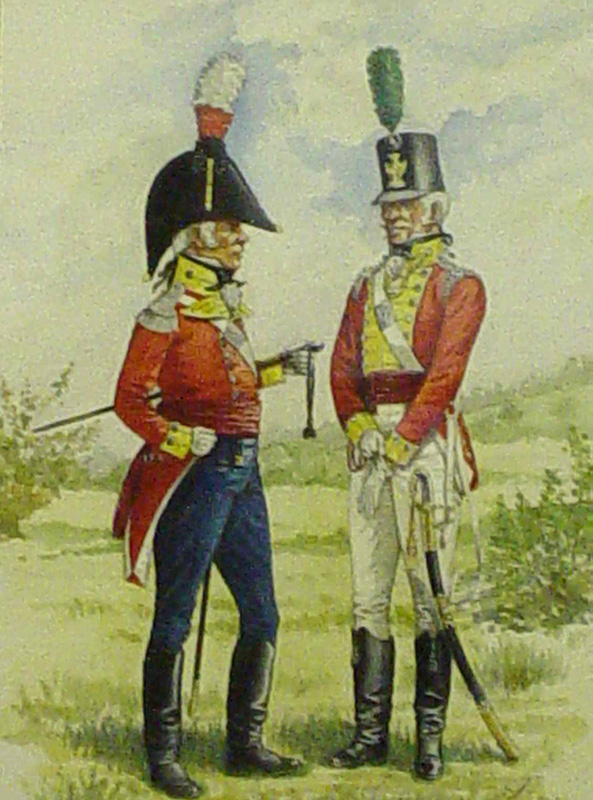
CHCRS4455 Battalion and Light Company officers, Cinque Ports Rifle Volunteers
The American War of Independence
The Regiment then proceeded to the Caribbean where they took part in the capture of St Vincent, Martinique, Cuba and Havana and returned to England in 1765 having suffered greatly from war and disease.
It returned to America in 1775 at the outbreak of the American insurrection, landing in Boston and, advancing against the colonists who were entrenched at Bunker Hill, it inflicted a heavy defeat on them. They were also heavily engaged the following year at White Plains, again defeating the insurgents, after which they were sent to the West Indies, where they shared in the capture of St Lucia.
In 1804, the title of the Regiment was changed at the request of Maj. General Lennox, the 4th Duke of Richmond, to the Sussex Regiment. The following year, the Regiment, now based in Malta which it had helped to seize, was sent as part of a force to Italy under Maj. General Sir John Stuart to stem the advance of a French army on Sicily by Napoleon’s brother.
They landed in Calabria and distinguished themselves at the Battle of Maida, where for the first time Napoleon’s forces were defeated. The British, in a short month’s campaign, finished off all the French forces in the south of Calabria and returned to Sicily, where they were re-united with the re-raised 2nd Battalion.
Both battalions took part in the Egypt campaign and took part in the capture of Alexandria; both returned to Italy, and in 1808 the 2nd Battalion returned home to Chichester. The 2nd Battalion was at Ostend at the time of Napoleon’s return from Elba and at the Battle of Waterloo formed part of the reserve which was posted to protect the right flank from a turning movement by the French. After the advance on Paris the 2nd Battalion returned to Ireland where it was disbanded.
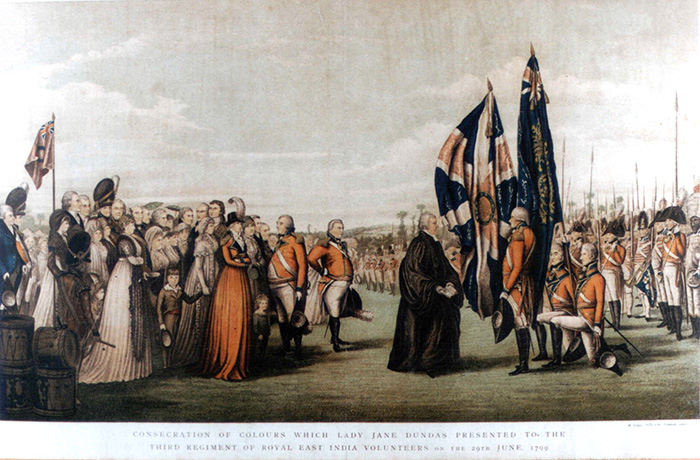
CHCRS1251 Consecration of Colours to the 3rd Bengal European Infantry by Lady Jane Dundas, wife of the Viceroy of India
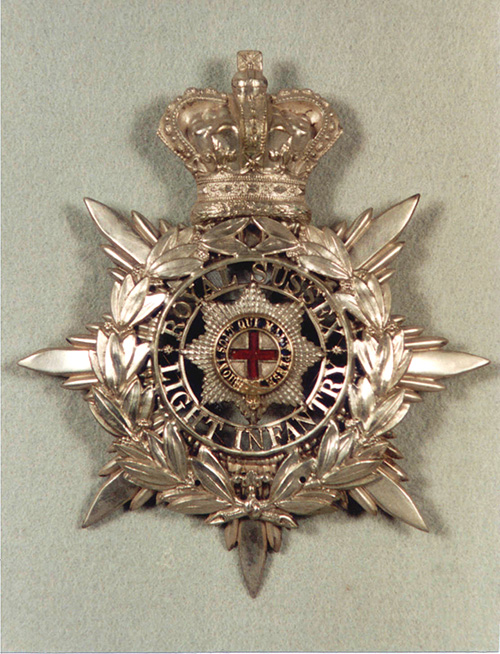
CHCRS023a Officer’s helmet plate, Royal Sussex Light Infantry Militia, c1882
Campaigns from 1832 – 1900
In 1832, the 1st Battalion returned to England from the West Indies, where shortly afterwards His Majesty King William IV was graciously pleased to direct that the Regiment should bear the appellation ‘Royal’ and the facings were subsequently changed to Royal Blue to replace the old Orange facings.
In 1854, the Regiment was posted to Calcutta and did good service during the Indian Mutiny, thus missing any involvement in the Crimean War. At the end of the mutiny, the Honourable East India Company’s regiments were absorbed into the British Army and re-numbered. The 3rd Bengal European Regiment became the 107th Foot and in 1873, under the Cardwell Reforms, became linked to the Royal Sussex Regiment. A depot common to both was formed at Chichester and, in 1881, the 107th Foot became the 2nd Battalion of the Royal Sussex Regiment.
Campaigns in the Sudan to try to rescue General Gordon followed which involved heavy fighting at Abu Klea, and a rush in gunboats to Khartoum only to find Gordon had been killed 24 hours before.
The 1st Battalion was despatched to South Africa in January 1900, which involved heavy fighting. This campaign saw the first use of the militia who volunteered for the active service companies, formed from the 3rd Militia Battalion, to support their regular comrades.
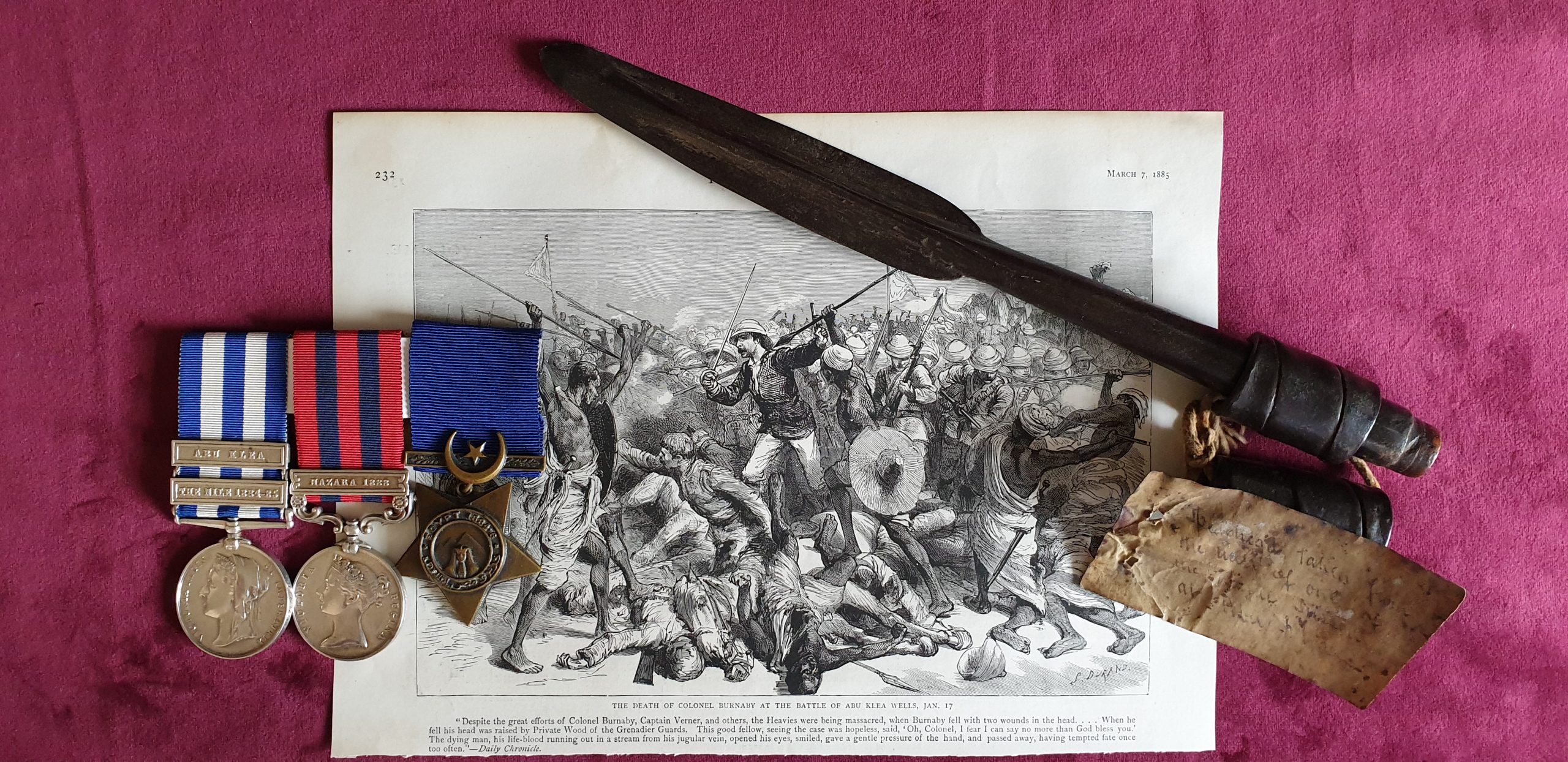
Abu Klea medal group and spear taken from the neck of a Royal Sussex soldier killed in the battle. Private collection
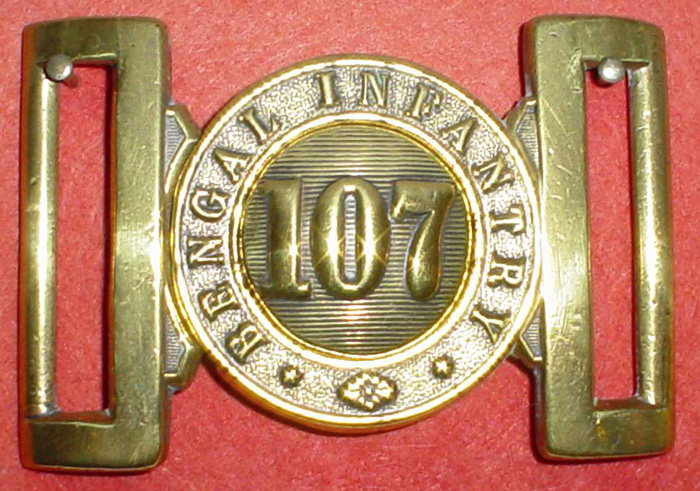
CHCRS0089 Waist belt clasp 107th Foot Bengal Infantry c1861
The First World War
The First World War saw 23 battalions of the Royal Sussex Regiment raised with no less than seven service battalions serving on the Western Front, alongside their Regular and Territorial Force comrades with engagements in all the major battles, and the award of 4 Victoria crosses (two of which were to New Army men) to the Regiment. Of the original two regular battalions, the 1st was stationed in India for the duration of the war gaining the battle honour ‘North West Frontier’ after some heavy fighting against Afghan tribes.
The 2nd Battalion, which landed in France on 7th of August 1914 as part of the BEF, served on the western front for the duration of the war. Although not involved in the initial battles at Mons and Le Cateau, conducted by II Corps, it became involved in the great retreat to the River Marne, where the allies counter-attacked the Germans. The 2nd Battalion was involved heavily in this advance and on the 10th September 1914 sustained their first 22 fatalities (the first of 7,302 sustained by the Regiment during the conflict) when driving the Germans from the little hamlet of Priez, just north of Chateau Thierry. In September 2014, to commemorate these first casualties, a memorial was unveiled in Priez in a project which had the full support of the community and citizens of Priez and the Regimental Association.
Having carried out an assault crossing of the River Aisne, the Battalion then fought a bloody battle at Vendresse, in an attempt to drive the Germans from the heights of the Chemin des Dames. This battle resulted in both the CO and adjutant and a further 140 other ranks being killed in a four day trench warfare struggle only broken four years later in the advance to victory in 1918.
The first action for the 116th (Royal Sussex) Brigade of the 39th (New Army) Division which was formed from the 11th, 12th and 13th Battalions was on 30th June 1916 at Richebourg l’Avoue. This was part of a series of diversionary attacks for the Somme Offensive, which was to start the following day. Like the first day of the Somme, this attack was poorly planned, poorly supported and resulted in heavy casualties for the assaulting troops. 17 officers, and 349 men were killed in five hours of fighting and became known as ‘The Day Sussex Died’.
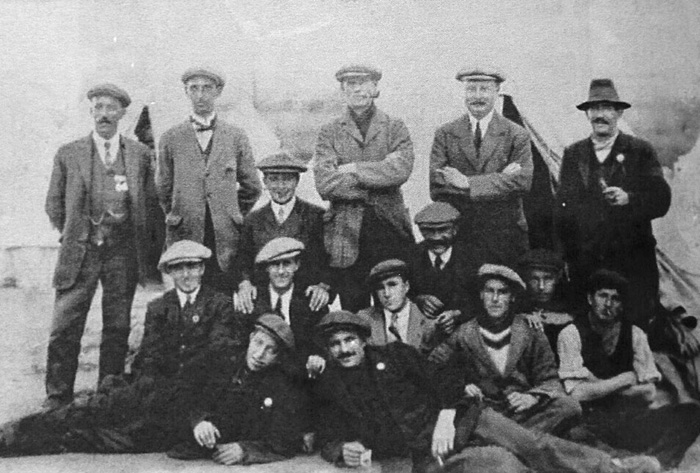
Early Lowther’s Lambs at Cooden Camp c1914. Note the man far left wearing his medals from a previous campaign
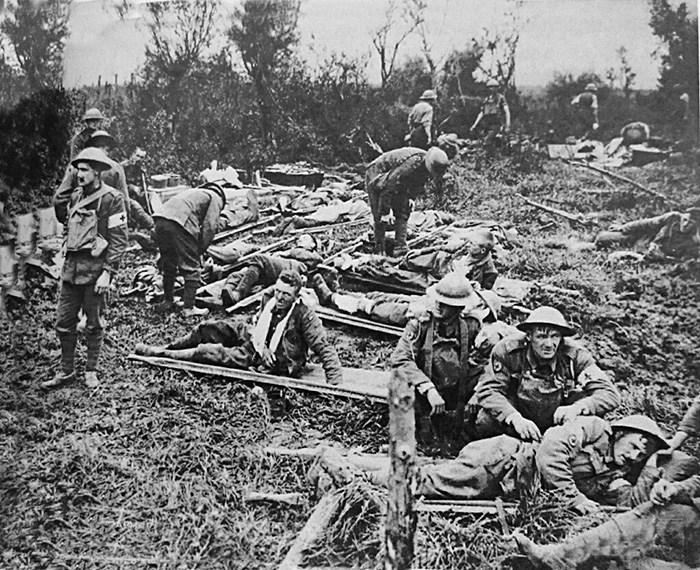
St. Vaast Casualty Clearing Station after the Battle of the Boar’s Head June 1916. This site is now the St. Vaast Post CWGC cemetery at Richebourg
The Second World War
World War 2, once again saw the Territorial Army mobilised for action in France. This conflict was very different from its predecessor in that far fewer battalions were raised and a good proportion were either amalgamated, disbanded or re-badged. The 1st Battalion fought the vast majority of the war within the 4th Indian Division in Eritrea and all of the major campaigns in the Western Desert including the Battle of El Alamein where they joined the 2nd, 4th and 5th Battalions. They ended the campaign by taking the surrender of General Von Arnim in Tunisia in 1943.
After reorganisation they took part in the slog up the Italian peninsular, taking severe casualties at the Battle of Monte Cassino. Conditions here were the closest of any WW2 battle to the conditions of the First World War. After the invasion of Europe the 8th Army were nicknamed the ‘D-Day Dodgers’ a term attributed, wrongly, to Viscountess Astor MP as there is no record of her saying it, but the term stuck. Those serving in the Italian campaign proudly responded by putting their own words to the song Lili Marlene, using the nickname as its title.
The 2nd, 4th and 5th Battalions were brigaded within the 44th Home Counties Division in France and the Middle East, the 3rd was a training battalion along with the 10th Battalion.
The 6th and 7th battalions went to France in 1940 as Line of Communication troops and were so badly mauled that after their evacuation back to the UK the 6th was disbanded. The 7th was re-badged Royal Artillery to become a Light Anti Aircraft unit, which then went back to France during the Normandy campaign and fought through to the Baltic Sea. The 8th battalion was a Home Defence unit and the 9th Battalion was sent to India and fought in Burma through to the end of the war.
The only VC awarded to the Regiment during the conflict was to Captain Lionel Queripel, who was on attachment to the 10th Battalion the Parachute Regiment and won his VC posthumously at Arnhem in 1944. Whilst already being badly wounded, he covered his men whilst attempting to withdraw back into the Oosterbeek perimeter.
He is buried in the Commonwealth War Grave Cemetery in Oosterbeek, and at the request of the family his VC and medals were placed in the Airborne Museum and are now held at the Imperial War Museum at Duxford. The family also requested that his sword was bequeathed to the Royal Sussex Regiment and forms part of the Regimental collection.
By kind permission of West Sussex County Record Office, taken from there Tercentenary DVD, The Royal Sussex Regiment 1701 – 2001.
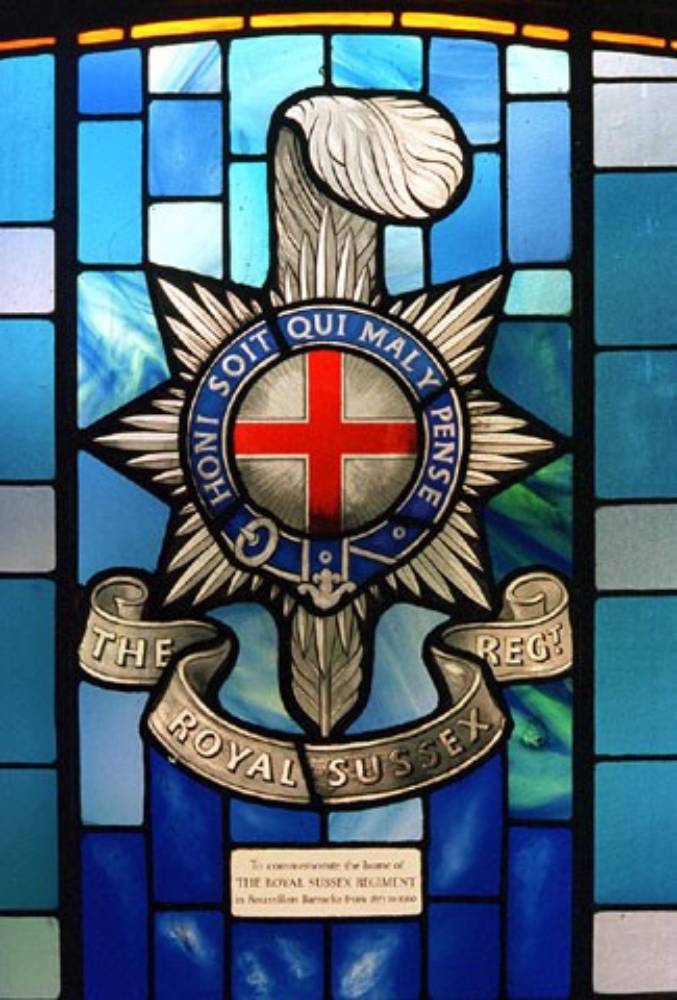
The Regimental stained glass window from the chapel at Roussillon Barracks, removed prior to the chapel’s demolition and now in the museum collection.
Post War Service
The Regiment was involved in many of the post war conflicts including Palestine, Korea, Aden and South Arabia, with a commitment to Northern Ireland before ‘The Troubles’ deepened in 1966 when the Regiment became one of several amalgamated to form the Home Counties Brigade. On 31st December 1966 it was amalgamated with the other regiments of the Home Counties Brigade to form 3rd Battalion the Queens Regiment (Royal Sussex). In 1992 the Queens Regiment and the Royal Hampshire Regiment amalgamated to become the Princess of Wales’s Royal Regiment.
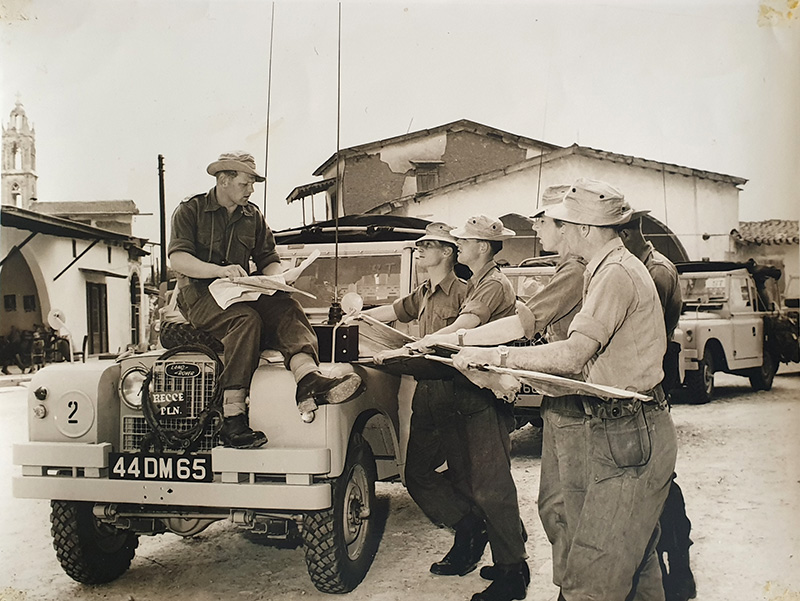
Recce Platoon, 1st Battalion The Royal Sussex Regiment Cyprus 1964

